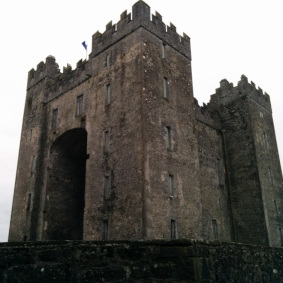https://www.openstreetmap.org/relation/1118816 Street view: https://goo.gl/maps/guoitK1nR6NcbhGT7
Website says open for visit “Weekdays 09.30 -17.00”. There’s an events page with tons of listings: https://www.arundelcastle.org/whats-on/
The original structure was a motte-and-bailey castle. Roger de Montgomery was declared the first Earl of Arundel as the King granted him the property as part of a much larger package of hundreds of manors. Roger, who was a cousin of William the Conqueror, had stayed in Normandy to keep the peace there while William was away in England. He was rewarded for his loyalty with extensive lands in the Welsh Marches and across the country, together with one fifth of Sussex (Arundel Rape). He began work on Arundel Castle in around 1067.
Between 1101 and 1102 the castle was besieged by the forces of Henry I after its holder Robert of Bellême rebelled. The siege ended with the castle surrendering to the king. The castle then passed to Adeliza of Louvain (who had previously been married to Henry I) and her husband William d’Aubigny. Empress Matilda stayed in the castle, in 1139. It then passed down the d’Aubigny line until the death of Hugh d’Aubigny, 5th Earl of Arundel in 1243. John Fitzalan then inherited jure matris the castle and honour of Arundel, by which, according to Henry VI’s “admission” of 1433, he was later retrospectively held to have become de jure Earl of Arundel.
The FitzAlan male line ceased on the death of Henry Fitzalan, 12th Earl of Arundel, whose daughter and heiress Mary FitzAlan married Thomas Howard, 4th Duke of Norfolk in 1555, to whose descendants the castle and earldom passed.
In 1643, during the First English Civil War, the castle was besieged. The 800 royalists inside surrendered after 18 days. Afterwards in 1653 Parliament ordered the slighting of the castle; however “weather probably destroyed more”.
Although the castle remained in the hands of the Howard family over the succeeding centuries, it was not their favourite residence, and the various Dukes of Norfolk invested their time and energy into improving other ducal estates, including Norfolk House in London. Charles Howard, 11th Duke of Norfolk, was known for his restoration work and improvements to the castle beginning in 1787. The folly that still stands on the hill above Swanbourne Lake was commissioned by and built for the Duke by Francis Hiorne at this time.
In 1846, Queen Victoria and her husband, Prince Albert, visited Arundel Castle for three days. Henry Howard, 13th Duke of Norfolk, internally remodelled the castle in time for her visit. The architectural firm responsible for design of the furniture was named Morant. The work included a suite of six rooms, built on the second floor of the south-east range at this time. The 19th-century embellishments had not been completed when this picture was published in 1880.
After the 1846 Royal visit the 15th Duke began re-structuring the castle again from 1875 to 1905. The work, which was done to the designs of Charles Alban Buckler and undertaken by Rattee and Kett of Cambridge, was completed in the late 19th century. The 16th Duke had planned to give the castle to the National Trust but following his death in 1975 the 17th Duke cancelled the plan. He created an independent charitable trust to guarantee the castle’s future, and oversaw restorative works.

